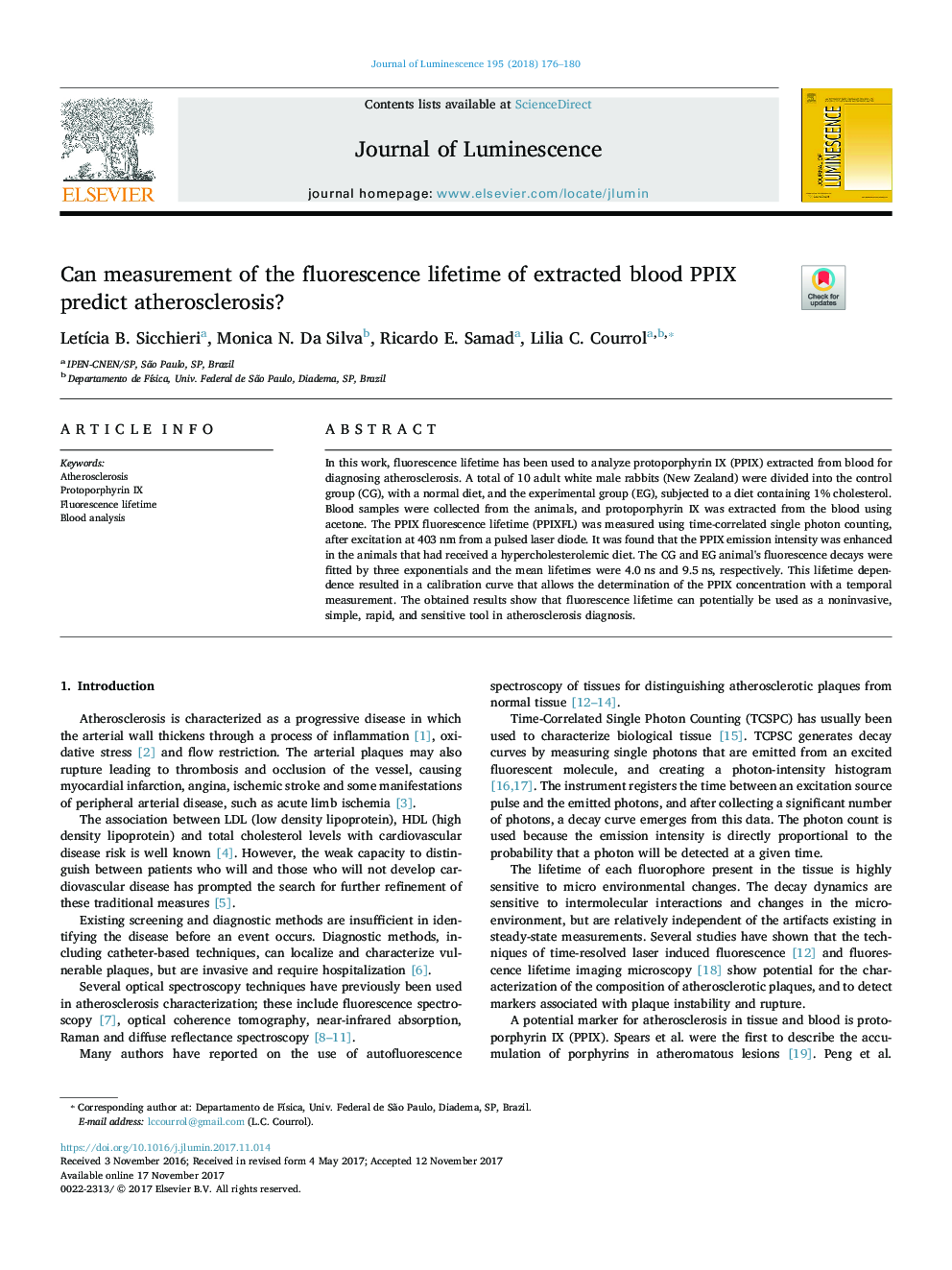| Article ID | Journal | Published Year | Pages | File Type |
|---|---|---|---|---|
| 7840403 | Journal of Luminescence | 2018 | 5 Pages |
Abstract
In this work, fluorescence lifetime has been used to analyze protoporphyrin IX (PPIX) extracted from blood for diagnosing atherosclerosis. A total of 10 adult white male rabbits (New Zealand) were divided into the control group (CG), with a normal diet, and the experimental group (EG), subjected to a diet containing 1% cholesterol. Blood samples were collected from the animals, and protoporphyrin IX was extracted from the blood using acetone. The PPIX fluorescence lifetime (PPIXFL) was measured using time-correlated single photon counting, after excitation at 403Â nm from a pulsed laser diode. It was found that the PPIX emission intensity was enhanced in the animals that had received a hypercholesterolemic diet. The CG and EG animal's fluorescence decays were fitted by three exponentials and the mean lifetimes were 4.0Â ns and 9.5Â ns, respectively. This lifetime dependence resulted in a calibration curve that allows the determination of the PPIX concentration with a temporal measurement. The obtained results show that fluorescence lifetime can potentially be used as a noninvasive, simple, rapid, and sensitive tool in atherosclerosis diagnosis.
Related Topics
Physical Sciences and Engineering
Chemistry
Physical and Theoretical Chemistry
Authors
LetÃcia B. Sicchieri, Monica N. Da Silva, Ricardo E. Samad, Lilia C. Courrol,
